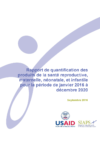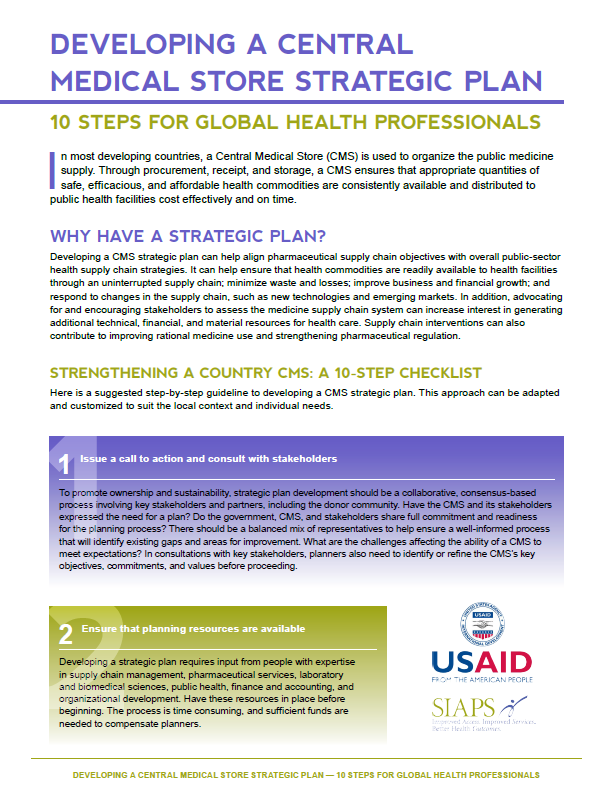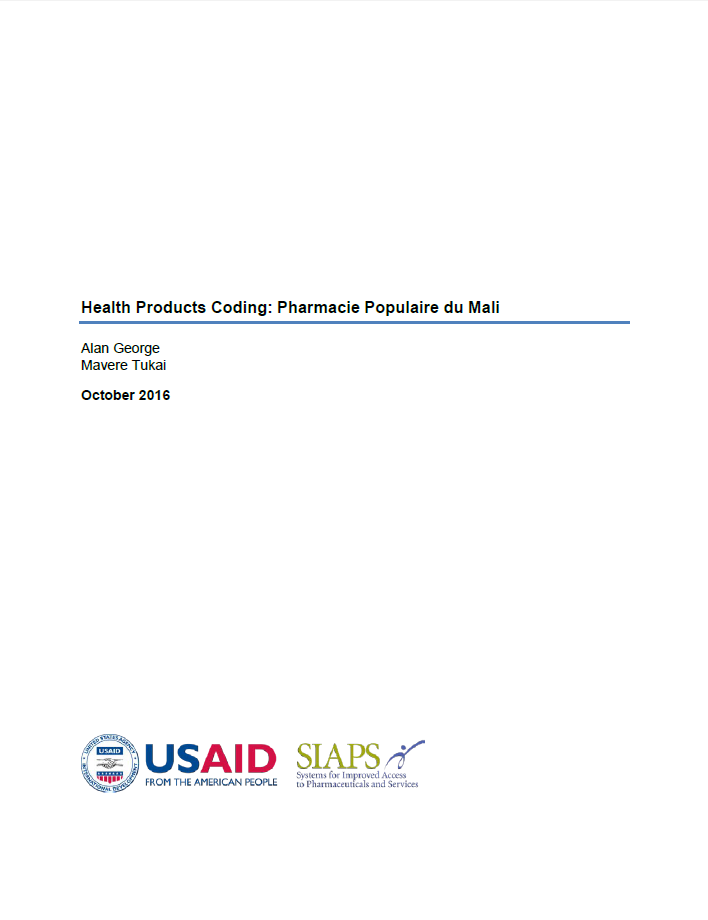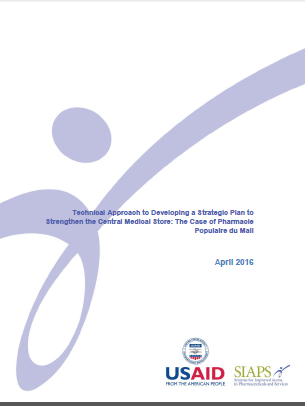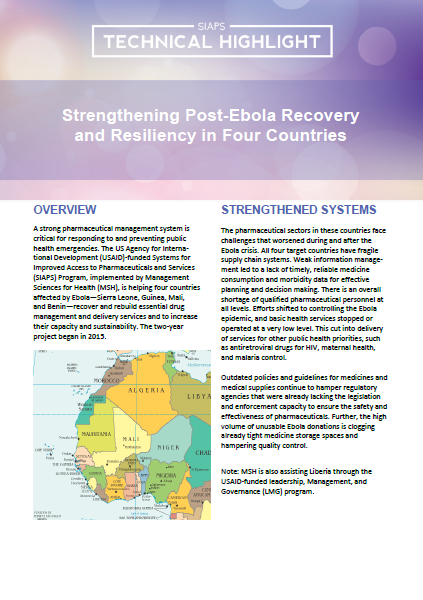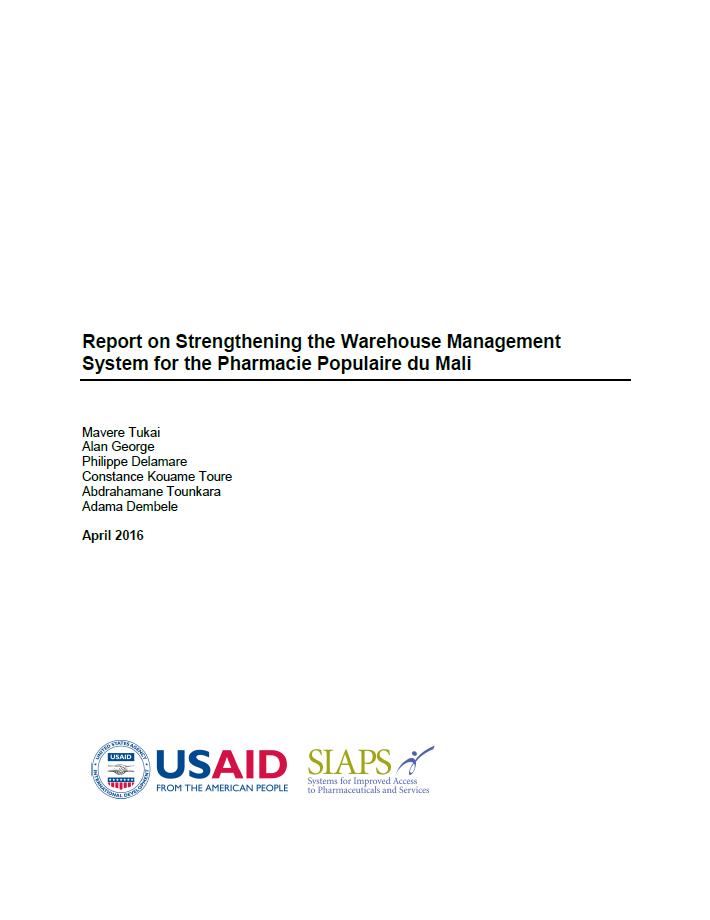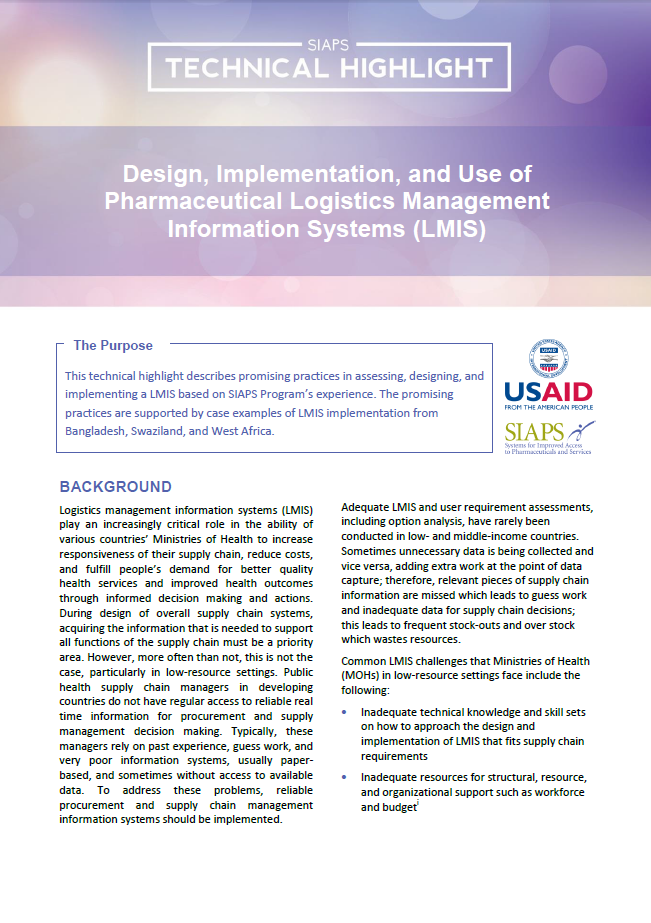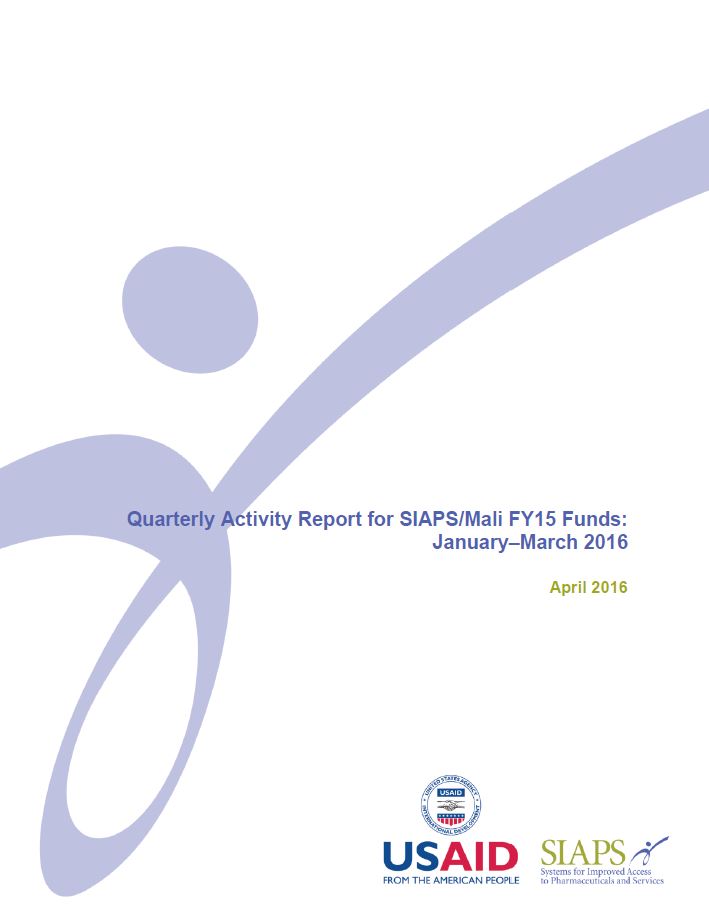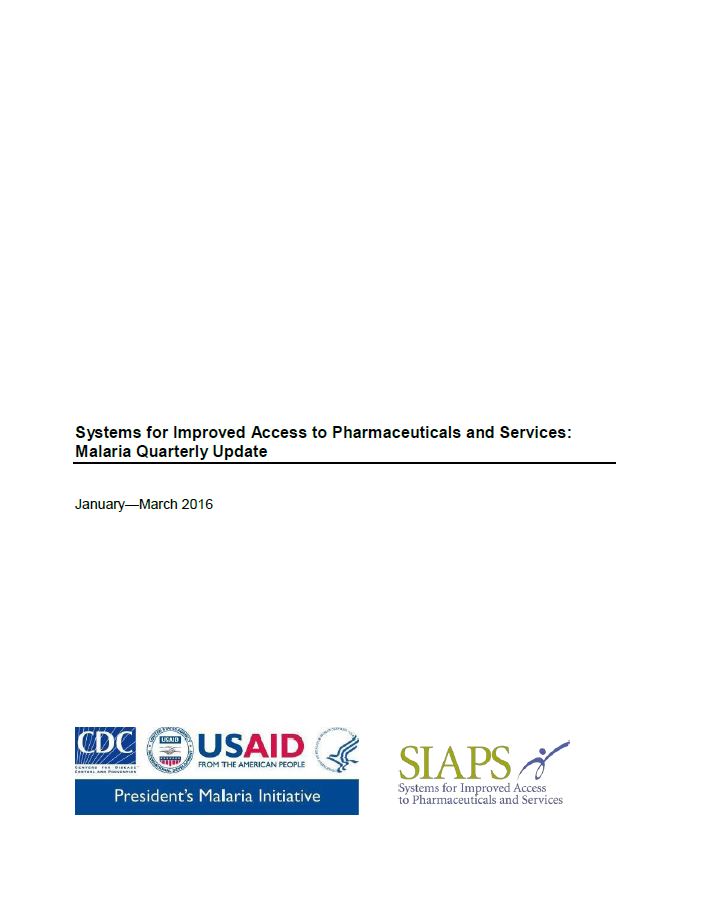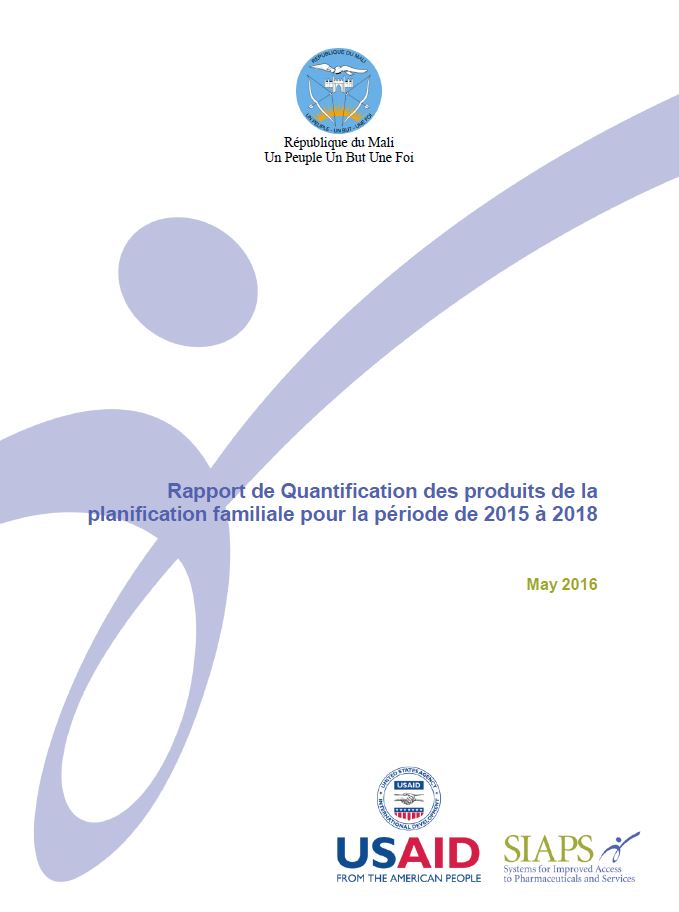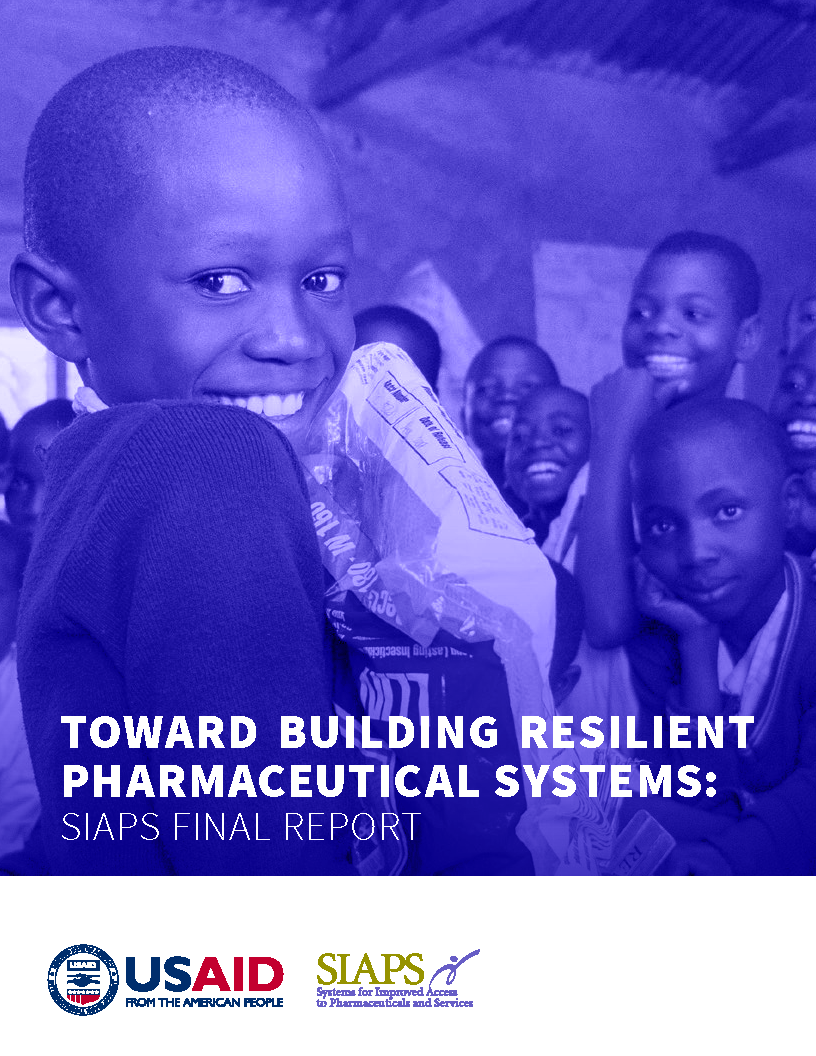L’accès à des médicaments appropriés est vital pour parvenir aux objectifs mondiaux en matière de santé, en particulier les produits destinés pour la santé de la femme et de l’enfant. Un élément majeur de l’accès est de garantir la disponibilité des produits. Pour cela, la quantification des besoins est indispensable. La présente activité a apporté un … Read more
A Bayoko, C Touré, DM Touré, M Doumbia, Mali, Quantification, Reproductive Maternal Newborn and Child Health, S Berthé, SM Kone, Supply chain management, Technical Report, Y Coulibaly
Developing a CMS strategic plan can help align pharmaceutical supply chain objectives with overall public-sector health supply chain strategies. It can help ensure that health commodities are readily available to health facilities through an uninterrupted supply chain; minimize waste and losses; improve business and financial growth; and respond to changes in the supply chain, such … Read more
The main purpose of developing product codes for the PPM is to standardize and improve inventory management practices at the PPM, to provide input to the PPM’s product master list, and to integrate the list throughout the commodity information system. In addition, the codes will be used in the product catalogue for clients to order from.
This document describes the techniques and experiences of and lessons learned from developing a strategic plan for the Pharmacie Populaire du Mali (PPM). Technical assistance providers, managers of pharmaceutical supply chain organizations, and consultants can adapt this information to suit local contexts and needs and apply it to their own public health pharmaceutical supply chain … Read more
A strong pharmaceutical management system is critical for responding to and preventing public health emergencies. The US Agency for International Development (USAID)-funded Systems for Improved Access to Pharmaceuticals and Services (SIAPS) Program, implemented by Management Sciences for Health (MSH), is helping four countries affected by Ebola—Sierra Leone, Guinea, Mali, and Benin—recover and rebuild essential drug … Read more
PPM is a strategic health commodities supply chain entity for the government of Mali. It operates under a performance contract with the government that is renewable every three years. The performance contract expects PPM to offer public health facilities and programs the best possible service level in terms of product availability and quality service. Since … Read more
A Dembele, A George, A Tounkara, CK Touré, Logistics Management Information System, M Tukai, Mali, P Delamare, Supply chain management, Warehouse Management System, warehousing
This technical highlight describes promising practices in assessing, designing, and implementing a LMIS based on SIAPS Program’s experience. The promising practices are supported by case examples of LMIS implementation from Bangladesh, Swaziland, and West Africa.
Angola, Bangladesh, Burundi, Guinea, Lesotho, LMIS, Logistics Management Information System, Mali, Swaziland, Technical Highlight, warehousing
This report is requested by the US Agency for International Development (USAID) Mali Mission on a quarterly basis. Its purpose is to present information on progress in the implementation of activities that the Systems for Improved Access to Pharmaceuticals and Services (SIAPS) Program in Mali planned for its program year (PY) 5 work plan. The … Read more
Working closely with the President’s Malaria Initiative (PMI) in both Washington and PMI- focus countries, the US Agency for International Development (USAID)-funded Systems for Improved Access to Pharmaceuticals and Services (SIAPS) Program aims to ensure the availability of quality pharmaceutical products and effective pharmaceutical services in support of PMI objectives. To this end, and based … Read more
Angola, Burundi, capacity building, Democratic Republic of Congo, Ethiopia, governance, Guinea, Malaria., Mali, Niger, Quantification, Quarterly report, South Sudan, Supply chain management, Training
L’exercice de quantification de 2014 pour les produits de la PF a été fait sur la base 20,1% de PC en 2018 selon le plan d’action PF et les résultats ont montré une surévaluation des besoins du pays. La quantification de 2015 a été menée dans un contexte d’harmonisation de l’objectif du plan d’action PF avec … Read more
